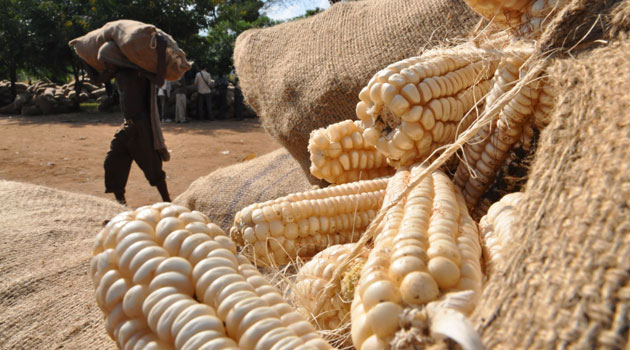
Farmers who had in the previous season practiced rouging and left the diseased materials on the ground or fed to livestock had 90 percent of their current crop affected/FILE
NAIROBI, Kenya, Aug 20 – The government has now confirmed that maize in at least four counties in the North Rift have been affected by the head smut disease.
This is after an investigation by officials from Ministry of Agriculture, Kenya Agricultural and Livestock Research Organization (KALRO), Kenya Plant Health Inspectorate Service, (KEPHIS) and Kenya Seed Company who joined officers from the counties.
The counties include Nandi (Ol’lessos area), ElgeyoMarakwet (Kamoi area), Trans Nzoia (Endebess) and Uasin Gishu (Moiben).
“The team conducted thorough surveys and investigations of the problem and unanimously identified it as head smut of maize. Investigations further revealed that all varieties of maize were affected,” Agriculture Principal Secretary Dr Richard Lesiyampe said in statement on Saturday.
Farmers who had in the previous season practiced rouging and left the diseased materials on the ground or fed to livestock had 90 percent of their current crop affected.
The officials also discovered that the disease was prevalent in the fields that exhibited crop stress for instance poor nutrient levels, weeds and moisture.
Head Smut is a fungal disease affecting cereal crops including maize, sorghum and grasses. Infection by smut fungi starts in the soil and the fungi will grow silently through the plant during the growing season without exhibiting distinct symptoms and the spores survive in soil for many years.
However, the typical signs are exhibited at flowering by masses of black puffed up galls on the cobs and tassels containing millions of spores which spread the disease over long distance as they become airborne.
Lesiyampe now says the agricultural officials are engaging farmers on how to control the spread of the disease going forward.
“Some of the management practices recommended to the farmers include; deep ploughing, burning of infected plants and crop rotation (2-3 year rotation with non-host crops). Other recommendations are use of certified seed and balanced soil nutrition fertilizer,” he said.
He has assured all farmers and other stakeholders that the Ministry and its agencies in collaboration with county governments will continue to undertake disease surveillance for timely interventions.
In the current season, the four counties have achieved about 291,440 hectares under maize crop and this is expected to yield a total of 10 million bags of maize.


































